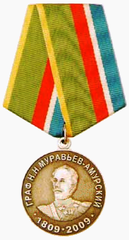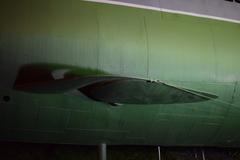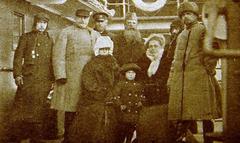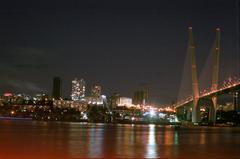Visiting the Monument to Lee Dong-Hwi in Vladivostok, Russia: An In-Depth Guide
Date: 03/07/2025
Introduction
The Monument to Lee Dong-Hwi in Vladivostok, Russia, stands as a powerful symbol of resilience, cultural identity, and international solidarity. Lee Dong-Hwi (1873–1935) was a revered Korean independence activist and the first prime minister of the Korean Provisional Government. His legacy is deeply intertwined with the anti-Japanese colonial movement and the political activism of the Korean diaspora in the Russian Far East. This monument, located near Pokrovsky Cathedral in Vladivostok’s city center, commemorates Lee’s enduring impact and the shared history between Korea and Russia, making it a significant site for locals, the Korean diaspora, and international visitors (vladivostok.travel; Korea Herald; Yonhap News).
Historical Context: Korean Migration and Anti-Colonial Activism
In the late 19th and early 20th centuries, Vladivostok became a haven for Korean migrants fleeing economic hardship, political instability, and Japanese colonial oppression. By the early 1900s, tens of thousands of Koreans called Vladivostok home, establishing vibrant cultural, educational, and political institutions. The city’s unique mix of Russian, Chinese, Japanese, and Korean influences fostered a dynamic environment for both economic growth and anti-colonial organizing (vladivostok.travel).
Lee Dong-Hwi: Life, Leadership, and Legacy
Lee Dong-Hwi (이동휘, 1873–1935) was a prominent figure in the Korean independence movement. After fleeing Japanese-occupied Korea, he settled in Vladivostok, where he galvanized the local Korean community and built strategic alliances with Russian revolutionaries. In 1919, Lee became the first prime minister of the Provisional Government of the Republic of Korea in Shanghai, a government-in-exile embodying Korean aspirations for sovereignty (Korean History Database). Lee’s final years were spent in Vladivostok, where he passed away in 1935, leaving a legacy of international solidarity and resistance.
The Monument’s Historical and Cultural Significance
The Monument to Lee Dong-Hwi is more than a commemorative statue—it is a symbol of enduring friendship between Korea and Russia, and a focal point for the Korean diaspora. Its site near Pokrovsky Cathedral is both historically and symbolically significant, serving as a gathering place for educational programs, annual commemorations, and cultural events. The monument stands as a testament to the contributions of the Korean community and their ongoing influence in Vladivostok’s multicultural landscape (Korea Herald; Yonhap News).
Architectural and Artistic Features
The granite monument features a dignified likeness of Lee Dong-Hwi, often depicted in traditional Korean attire. Inscriptions in both Korean and Russian read: “In memory of Lee Dong Hwi,” emphasizing mutual respect and shared history. Informational plaques provide context on Lee’s life, the independence movement, and the Korean community’s legacy in Vladivostok. The monument’s modern yet solemn design, crafted in South Korea and installed in 2024, invites reflection and remembrance (Adobe Stock).
Visiting the Monument: Hours, Tickets, and Accessibility
- Location: Near Pokrovsky Cathedral, central Vladivostok
- Visiting Hours: Open 24/7, year-round
- Entry Fees: None—admission is free
- Accessibility: Wheelchair accessible with paved walkways; benches and shaded areas nearby
- Best Times: Late spring (May–June) and early autumn (September–October) offer mild weather and lush scenery
- Travel Tips: Combine your visit with nearby historical sites such as the Vladivostok Fortress, Arseniev State Museum, and Svetlanskaya Street for a full day of exploration (Vladivostok City)
Getting There
- By Air: Vladivostok International Airport (Knevichi) is about 38 km from the city center; options include shuttle vans, taxis, and rideshare apps (Vladivostok Travel).
- By Train: The Vladivostok Railway Station is the eastern terminus of the Trans-Siberian Railway, centrally located.
- By Public Transport: Buses and minibuses stop near Pokrovsky Cathedral; fares start at 23 rubles (2Vladivostok).
- On Foot: The monument is easily accessible from downtown hotels and attractions, offering scenic urban walks (How to Russia).
Nearby Attractions and Amenities
- Pokrovsky Cathedral: A prominent Russian Orthodox landmark adjacent to the monument
- Vladivostok Fortress: Military history and panoramic views
- Arseniev State Museum: Regional history and Korean diaspora exhibits
- Food & Drink: Numerous cafes and restaurants nearby offer Russian and Asian cuisine
- Shopping: Svetlanskaya Street and Old Town for souvenirs and local crafts (TravelSetu)
Cultural and Diplomatic Significance
The monument is a site of memory for the Korean diaspora (Koryo-saram), reflecting the community’s resilience despite adversities such as the 1937 Stalin-era deportations. It also symbolizes the evolving diplomatic relationship between Russia and South Korea, highlighting ongoing cooperation in trade, infrastructure, and cultural exchange (Wikipedia). Annual ceremonies and public events foster intergenerational remembrance and reinforce the bonds between the two nations.
Visitor Experience and Etiquette
- Behavior: Maintain a respectful and quiet demeanor, especially during ceremonies
- Photography: Permitted; best lighting in early morning or late afternoon
- Language: Russian is predominant; English and Korean are common in tourist areas; monument inscriptions are bilingual
- Facilities: Public restrooms and benches nearby; area is well-trafficked and safe
Suggested Itinerary Integration
Sample Half-Day Walking Route:
- Start at Vladivostok Fortress (morning)
- Visit S-56 Submarine Museum and Military History Museum of the Pacific Fleet
- Pause at the Monument to Lee Dong-Hwi for reflection and photos
- Enjoy lunch and shopping on Svetlanskaya Street
- End the day with sunset views from Eagle’s Nest Hill
Special Events and Commemorations
Attend commemorative events at the monument on key dates such as:
- Korean Independence Day (August 15)
- Victory Day (May 9) These events often include cultural performances, speeches, and wreath-laying ceremonies (Itimaker).
FAQ
Q: What are the visiting hours?
A: The monument is open to the public 24/7.
Q: Is there an entry fee?
A: No, access is free.
Q: Is the site wheelchair accessible?
A: Yes, paved walkways ensure accessibility.
Q: Are there guided tours?
A: Yes, local operators offer tours in several languages.
Q: Are special events held at the monument?
A: Yes, especially on Korean Independence Day and other significant dates.
Visuals and Media
High-quality images and videos can be found on official tourism sites and portals. Many virtual tours offer a preview of the monument and its surroundings, with optimized alt text for accessibility (e.g., “Monument to Lee Dong-Hwi in Vladivostok with Korean and Russian inscriptions”).
Internal and External Links
- Korean History Database
- vladivostok.travel
- Korea Herald
- Yonhap News
- Travelertopia
- How to Russia
- 2Vladivostok
- TravelSetu
- Itimaker
Final Tips for a Memorable Visit
- Check weather forecasts and dress appropriately.
- Combine your visit with other local attractions.
- Consider a guided tour for deeper historical insights.
- Observe respectful behavior, especially during commemorations.
For more travel tips and guided experiences, download the Audiala app and follow us on social media.
Conclusion
The Monument to Lee Dong-Hwi in Vladivostok is more than a landmark; it is a living narrative of courage, migration, and cross-cultural solidarity. Its presence honors both a pivotal figure in Korean history and the enduring contributions of the Korean community in the Russian Far East. By integrating a visit to the monument into your Vladivostok itinerary, you connect with the city’s layered past and vibrant present. For updates on hours, events, and visitor resources, consult official tourism sites and the Audiala app.



